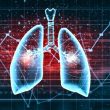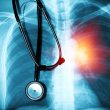✔️ SOLACI-SBHCI 2023 – International Live Case | Transcatheter pulmonary valve replacement. ✔️ Site: Medicine, Doha, Qatar. ✔️ August 3, 2023, Arpoador Room, Windsor Oceánico.
Transcatheter Pulmonary Valve Replacement | SOLACI-SBHCI 2023 – International Edited Case
✔️ SOLACI-SBHCI 2023 – International Live Case | Transcatheter pulmonary valve replacement. ✔️ Site: Union Hospital – Wuhan, China. ✔️ August 4, 2023, Arpoador Room, Windsor Oceánico.
Acute Pulmonary Thromboembolism: When Anticoagulation Alone May Not Be Enough
In recent times, pulmonary thromboembolism (PTE) has been the subject of growing research due to its persistent impact on morbidity and mortality. Acute PTE, if not properly treated or inadequately treated, can lead to a debilitating condition known as post-PTE syndrome, which has been documented in nearly 50% of survivors. The primary treatment strategy for...
FLAME Study: FlowTriever Device in High-Risk Pulmonary Embolism
High-risk pulmonary embolism (HR-PE) is characterized by hemodynamic instability and marked deformation of the right ventricular (RV) fiber, which can lead to acute RV failure and hemodynamic collapse, with in-hospital mortality close to 25%. While guidelines recommend anticoagulant treatment followed by thrombolytics, these strategy carries a high risk of bleeding and is not suitable for...
SOLACI-SBHCI 2023 | Acute pulmonary embolysmworkflow: Patient Screening & Endovascular treatment indications – Dr. João Luiz Frighetto
Read the most outstanding articles from SOLACI-SBHCI 2023 Congress. In this case, check the presentation by Dr. João Luiz Frighetto, entitled “Acute pulmonary embolysmworkflow: Patient Screening & Endovascular treatment indications”
Have Complications Related to Balloon Pulmonary Angioplasty Changed Since its Inception?
Balloon pulmonary angioplasty: Evolution over time and its complications Balloon pulmonary angioplasty (BPA) has grown from its beginnings as an indication for patients with chronic thromboembolic pulmonary hypertension (CTEPH) to being currently a class 1 indication for inoperable patients and/or residual CTEPH. Current evidence on this topic is underpowered, as most reports are based on...
Pulmonary valve replacement: experience using the Venus P-Valve
By Dr. Alejandro Peirone.
Pulmonary Artery Denervation: Valid Alternative for Pulmonary Arterial Hypertension Grade 1?
Pulmonary vessels are densely innervated by sympathetic, parasympathetic, and sensitive fibers. According to the World Health Organization (WHO) pulmonary arterial hypertension (PAH) grade 1 consists of obliterating pulmonary vascular remodeling accompanied by a diminished generation of vessel dilators. Its pharmacological treatment has certain limitations and sympathetic pulmonary vascular denervation might be a valid treatment alternative,...
We Should Start Considering Pulmonary Hypertension After TAVR
Pulmonary hypertension is associated with higher mortality after both aortic valve replacement and transcatheter aortic valve replacement (TAVR). This is a dynamic phenomenon, and what happens after TAVR —during the periprocedure— and its impact are yet to be evaluated. Researchers conducted a subanalysis of the Japanese OCEAN TAVI Registry, which included 1872 patients who were divided...
Is Right Ventricle-Pulmonary Artery (RV-PA) Coupling Important in Low Risk TAVR?
TAVR has long been an effective strategy to treat aortic stenosis. However, ventricular damage starts further before symptom onset, also affecting the left ventricle, pulmonary vessels, the right ventricle, the tricuspid valve, and the right atrium. It increases arterial afterload and uncouples the right ventricle and the pulmonary artery, defined by transthoracic echocardiogram as the relationship...








